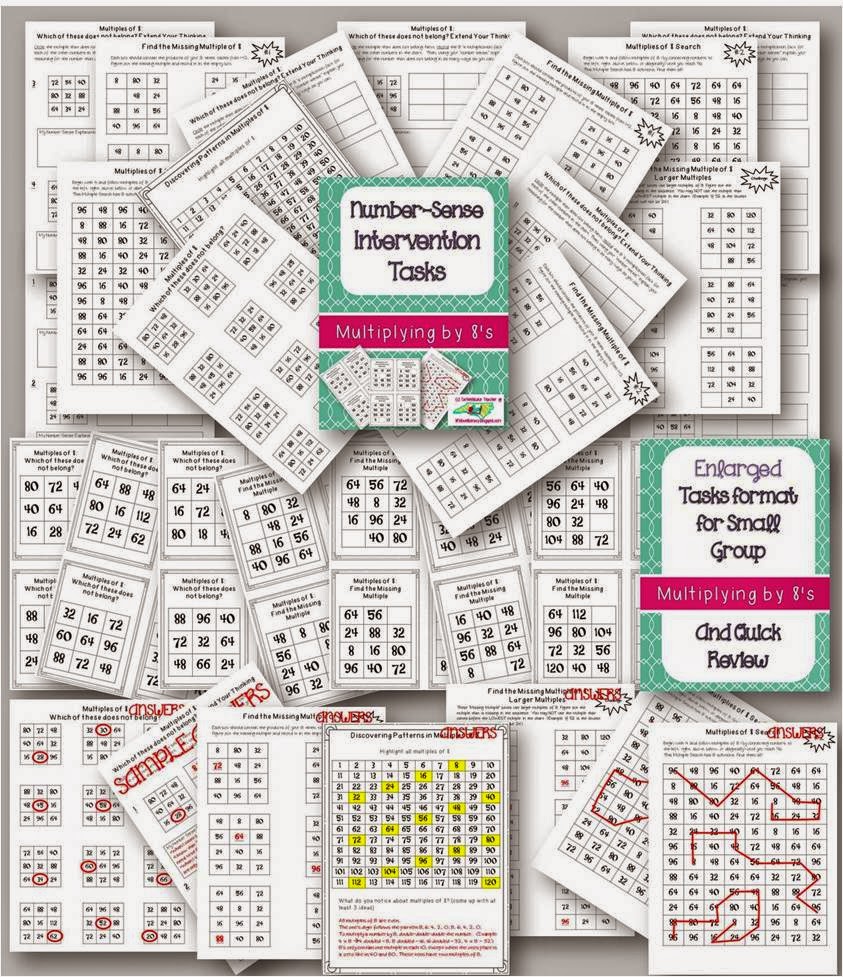Multiplication fact fluency is SOOO important for continued math success. Students who know their multiplication facts are more confident when learning a new skill. Students who do not know their multiplication facts may feel that they don't understand new concepts (everyone who can multiply quickly is already ahead of them in solving the multiplication, division, or simplifying fractions problem), when in actuality, they are so hung up on figuring out a multiplication fact that what comes next in the process goes on the back burner and they have most likely forgotten what the teacher has just shown them to do next. I know what you are thinking {maybe}--give them a multiplication fact chart that they can refer to. Great idea, but is this a "forever" solution?
This year, I implemented Rocketship Math, a math facts program that I was trained on a few years ago and had implemented into my 5th grade classroom once. I'll share more about Rocketship in another post, but you can click on the program's website to learn more. For the purposes of this post, you just need to know that it's about a 10 minute fact fluency routine that my students do each day.
One day, I watched a student write "4 x 9 = 37" and it hit me...this student doesn't even realize that all multiples of 4 are even. This student lacks number sense and has perhaps not had the "obvious to me" pointed out to her. I have students who count-by to get to their facts, but their count-by's aren't even efficient (like in the image above "6, 12, 18--19, 20, 21, 22, 23, 24--24...what was I doing again?"). This student doesn't realize that they can count by 6's then add 3 and 3 or have other ways to efficiently count up to multiples they do not yet have memorized.
Somewhere in my research, I read that to master multiplication facts, students need lots of experiences with "county-bys." I follow Donna's blog Math Coach's Corner {like a stalker ;} and read this blog post that suggested a "Count around the Circle" activity. That sounds great for the younger grades. I read that wishing my students could go back in time and have that circle experience, but I couldn't see myself getting my whole class to sit in a circle and productively play this game when only about 5 of my students really need it.
I realized that a handful of my students need a separate intervention that is a few steps back from the fact memorization I'm aiming for. These students need extra time working with "count-bys" and looking for patterns in their fact families. Out of this realization, grew my Number Sense Intervention Tasks, fun ways for students to look for number patterns and practice "count-by's" so that they become more efficient. I have finished all of the sets and made Multiplying by 2's and 7's FREEBIES.
Which of these Does Not Belong? Students use number sense to figure out which number does not make sense for that multiple, maybe it is too close to a multiple students know, maybe it is odd and should be even, maybe it does not have the correct number in the ones place, etc.
Which of these Does Not Belong~Extension Pages
Find the Missing Multiple-forces students to "count-by" for a purpose and to become more efficient doing so by noticing whether or not the next multiple is in the chart. Use these cards a lot and hopefully it will break students from counting up to the next multiple one-number-at-a-time.
Multiple Search: another fun reason to "count-by" to find three strings of multiples from the 1st multiple all the way to 12th.
120's boards for analyzing patterns and having aha moments (like all multiples of 4 are even!)
I hope you take the time to check out these Number Sense Intervention Tasks:
Multiplying by 2's TRY IT FREEMultiplying by 3's
Multiplying by 4's
Multiplying by 5's
Multiplying by 6's
Multiplying by 7's TRY IT FREE!
Multiplying by 8's
Multiplying by 9's
Multiplying by 10's
Multiplying by 11's
Multiplying by 12's
Number Sense Intervention Bundle
In my next post, I will go through a format for using these tasks {with repetition} in a small group intervention setting. Happy New Year to you!
In my next post, I will go through a format for using these tasks {with repetition} in a small group intervention setting. Happy New Year to you!










I second all your thoughts! Master addition facts is 2nd is paramount just like mulitiplication in 4th. Bravo o all your research!
ReplyDelete